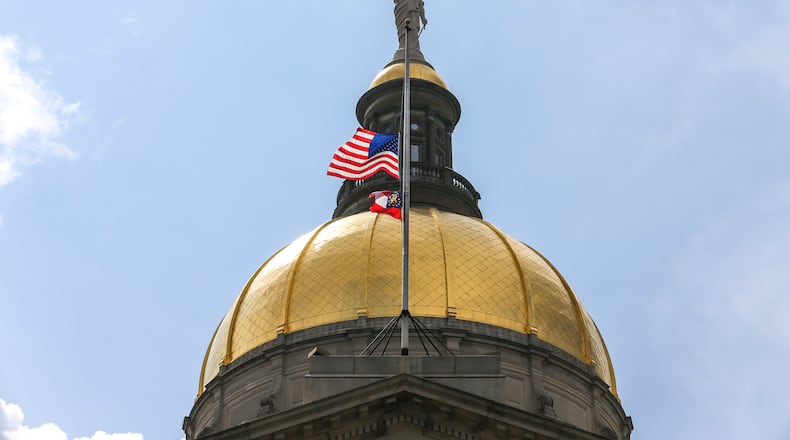Last summer, an analysis put the cost of Part 2 of the General Assembly plan to cut the state income tax rate at $550 million.
That cost to the state - and savings for some Georgians - might have been low-balling it.
A new report from the same analyst - Dan Kanso, a tax expert for the Georgia Budget and Policy Institute think tank who worked for then-Lt. Gov. Casey Cagle when the two-step plan was approved two years ago - now says Phase 2 will cost closer to $615 million.
Amid spending cuts mandated by Gov. Brian Kemp, it's unclear whether lawmakers were even going to approve a second rate cut this session. Especially since the first rate cut was credited - in part - with causing sluggish revenue collections, a factor behind Kemp's order to many agencies to cut spending 4% this fiscal year and 6% next year.
With Cagle running for governor in 2018, lawmakers voted to reduce the top state income tax rate from 6% to 5.75% in response to federal tax changes that, officials thought, would force many Georgians to pay higher state taxes.
The 2018 legislation set up a second vote, in 2020, to lower the rate again to 5.5%.
Jeffrey Dorfman, the state's fiscal economist and a University of Georgia professor, told lawmakers last month that most Georgians probably didn’t notice the first tax cut because at the same time they were seeing a slight dip, they were also probably seeing a rise in what they paid for health insurance.
Kemp’s budget cuts put somewhat of a damper on talk of a second tax cut. While some upper-income Georgians and corporations might save enough to notice the second tax cut, Kanso said a vast majority of families would see little.
Last month the chairman of the Senate Finance Committee, Sen. Chuck Hufstetler, R-Rome, said he didn't think the math would work to cut taxes again at a time when lawmakers were being asked to cut spending.
At $615 million a year, the second rate reduction would likely force lawmakers to cut spending much deeper than they are planning to this session. Kemp’s proposed cuts would amount to $200 million this year and $300 million in fiscal 2021, which begins July 1.
An Atlanta Journal-Constitution poll in January found that about 50% of voters favor keeping the current rate, against roughly 38% who want to see the rate cut again. An additional 9% said taxes should be increased. The remainder either said they did not know or refused to respond.
That doesn't mean it won't be up for discussion. Even some Republican lawmakers who are skeptical that the state can afford another tax cut right now said they expect the issue to be raised this session. House Speaker David Ralston, R-Blue Ridge, for one, has voiced support for more tax cuts.
"I think that (tax cut) is still a priority for a lot of Republicans, including the Legislature," Kyle Wingfield, the president of the Georgia Public Policy Foundation, said last month. "I would expect to see them make good on that promise they made in 2018."
One way to lower the cost to the state would be to pass legislation that has been debated for years that would create a flat income tax rate of, say, 5.5%, and provide a tax credit for low-income working families so they wouldn't see a tax increase when lower tax brackets are eliminated. A similar proposal passed the Georgia House in 2017.
However, Kanso said such legislation would mean a tax increase for about 642,000 low- and middle-income households with, again, most of the money that’s saved going to those making big incomes.
Kanso said raising the standard deduction again for ratepayers would provide a more broad-based tax break.
But with budget cuts looming, he said, lawmakers should concentrate on ways to increase revenue. Legislators did that the first week of the session, passing a measure to collect more of the taxes that are already owed from sales made through websites or apps. Kemp signed the measure into law last month.
It goes into effect April 1.
In his report, Kanso wrote: “Over the nearer term, the state’s first priority should be to enact measures that will strengthen revenue collections and help the state avoid budget cuts that affect important functions of state government.
“After nearly 10 years spent building back from the Great Recession, regaining the state’s fiscal footing will allow for investments in the future and ensure Georgia remains prepared for any challenges that may arise as the state enters a new decade with optimism for continued growth.”
About the Author
Keep Reading
The Latest
Featured




